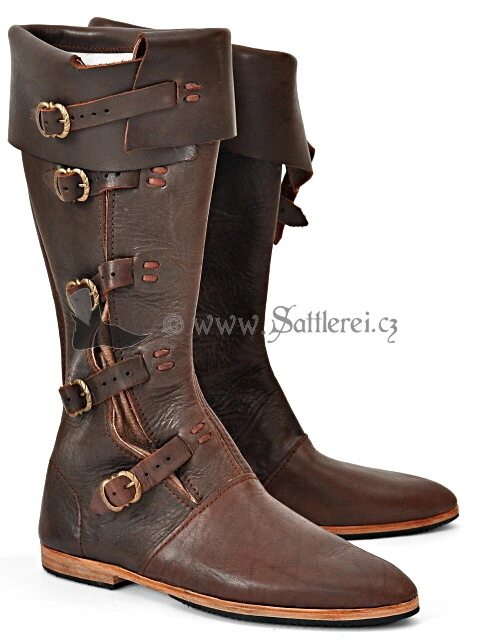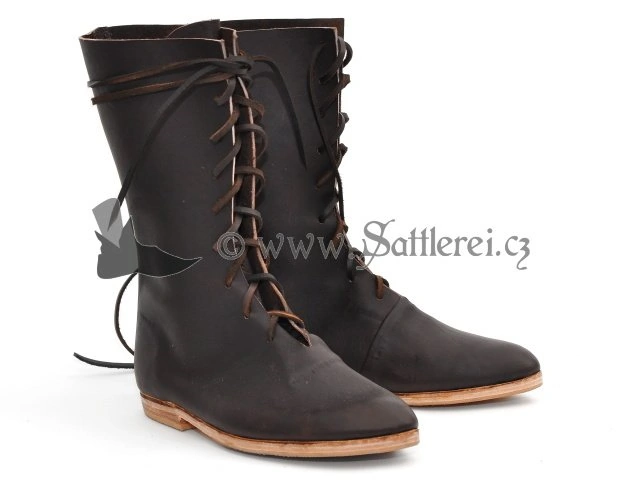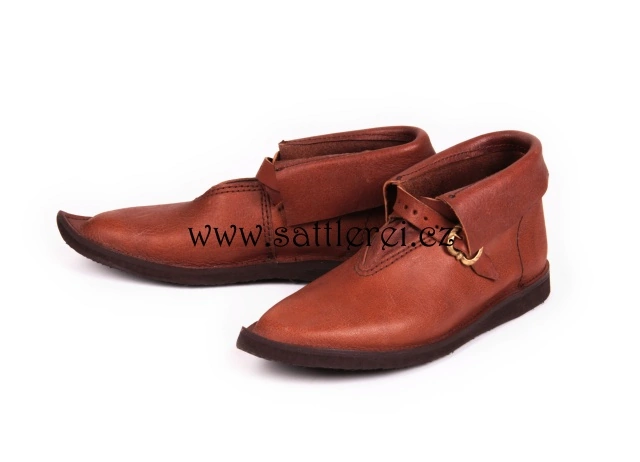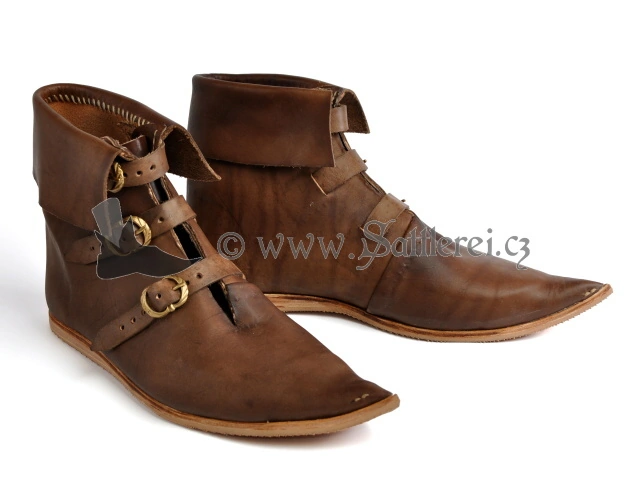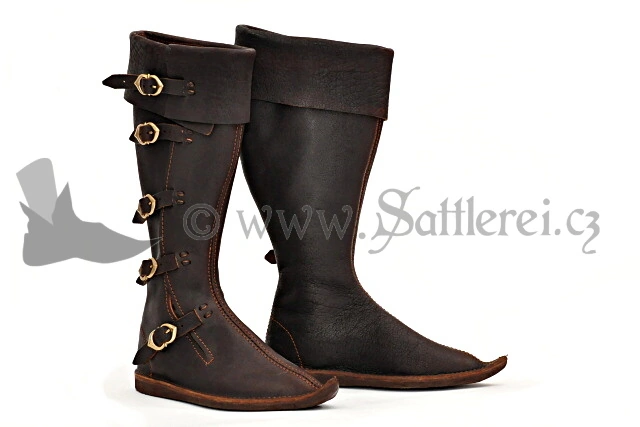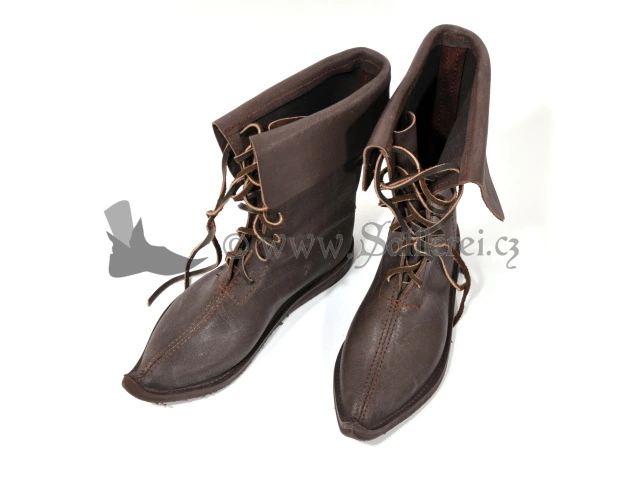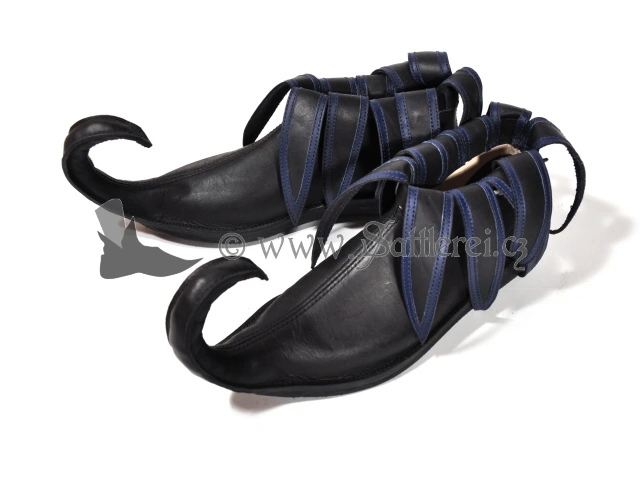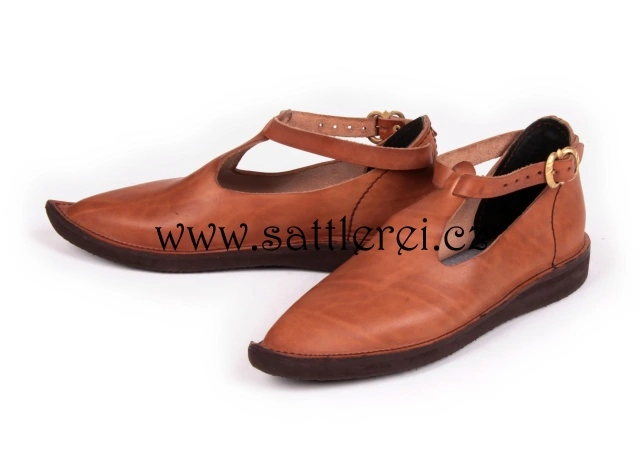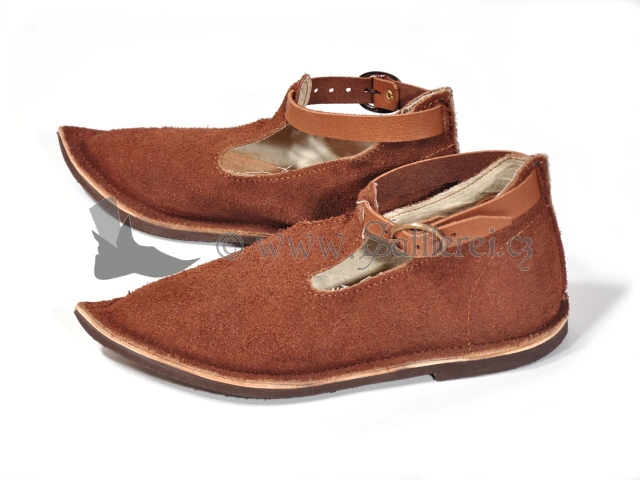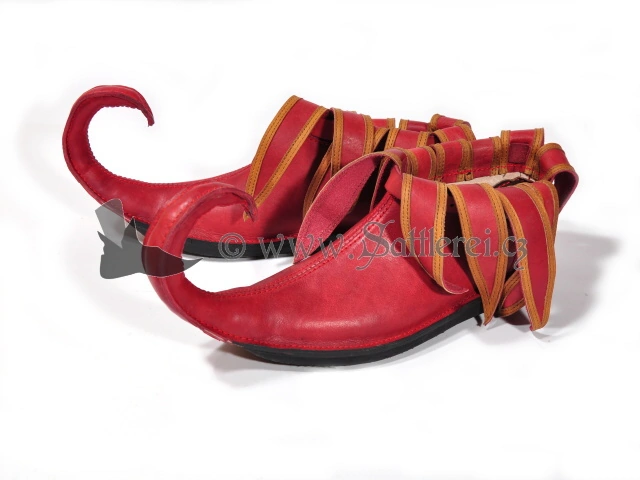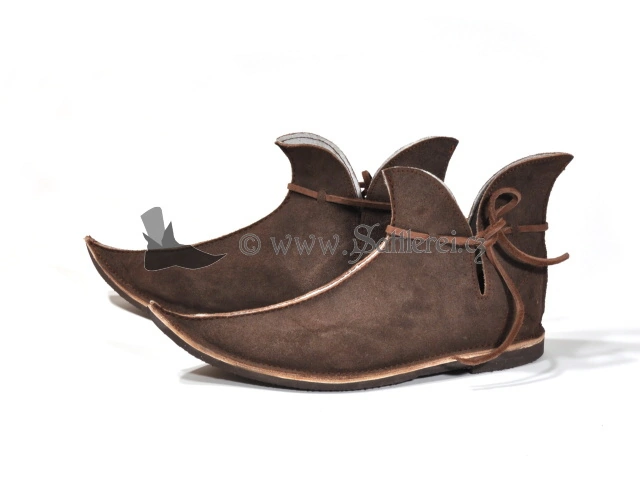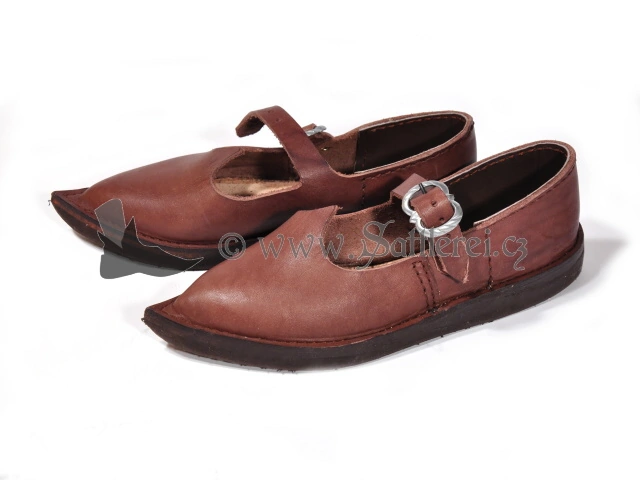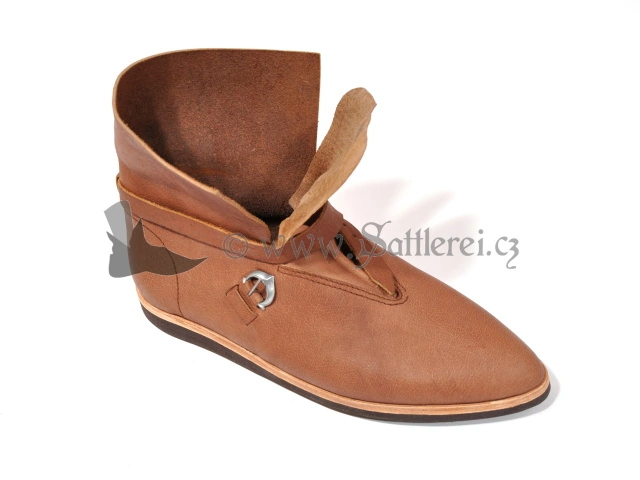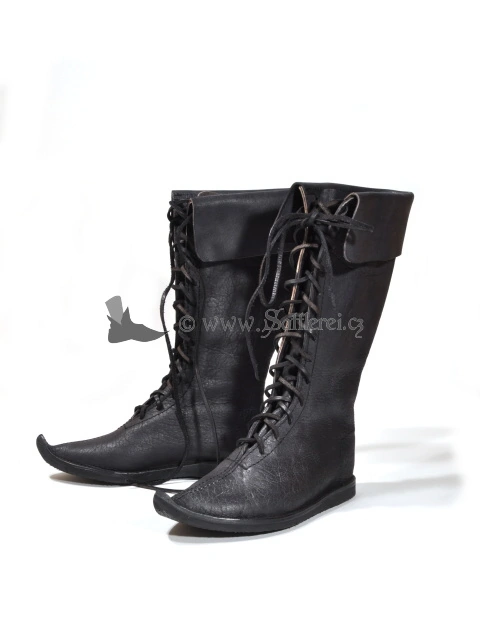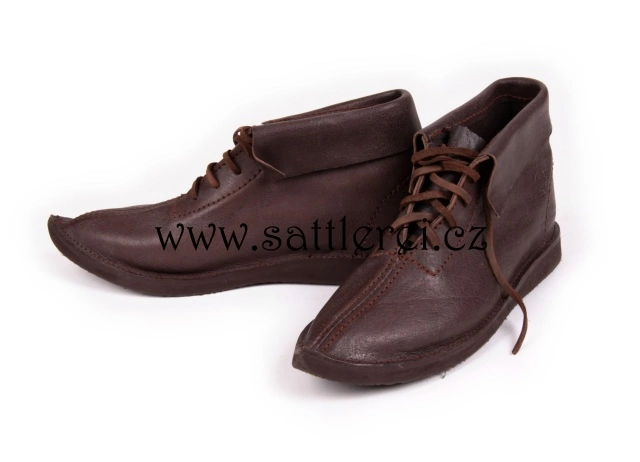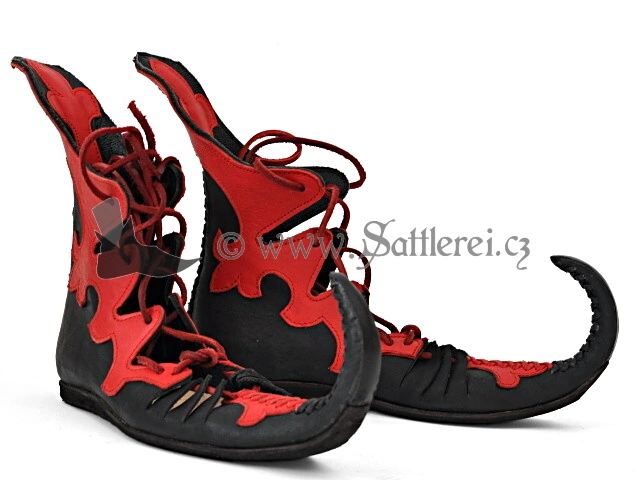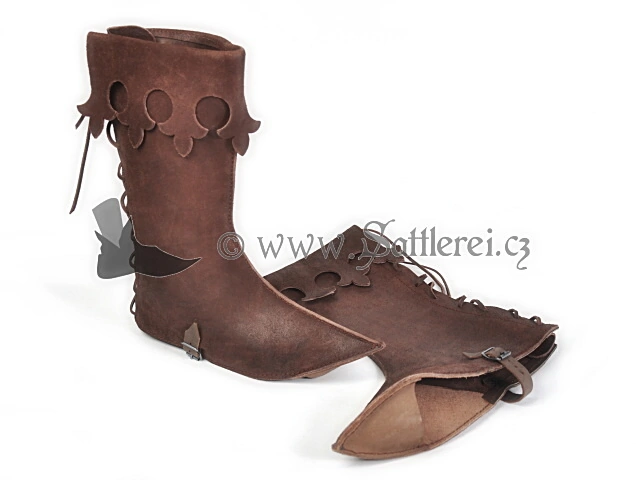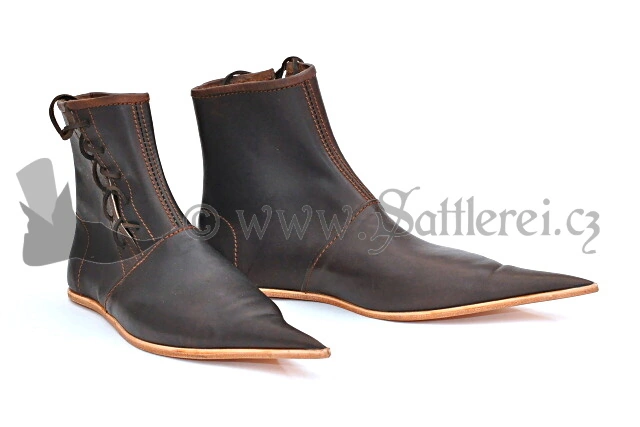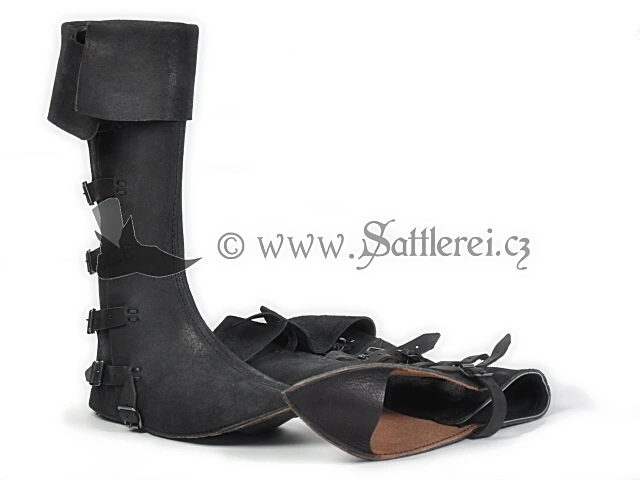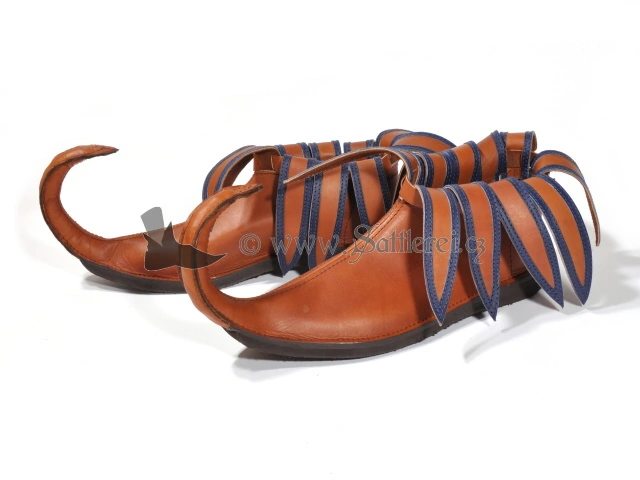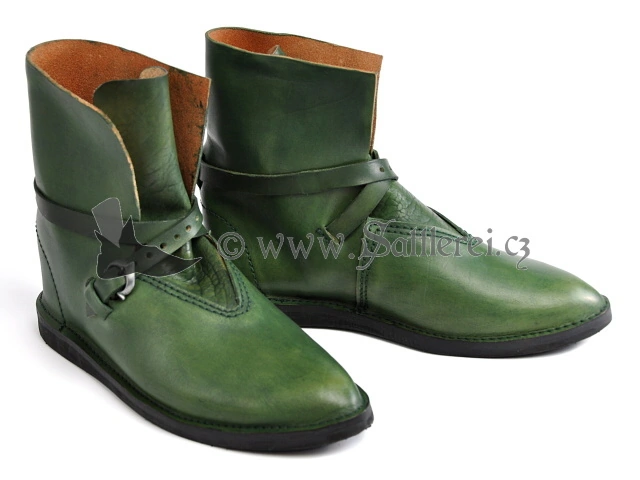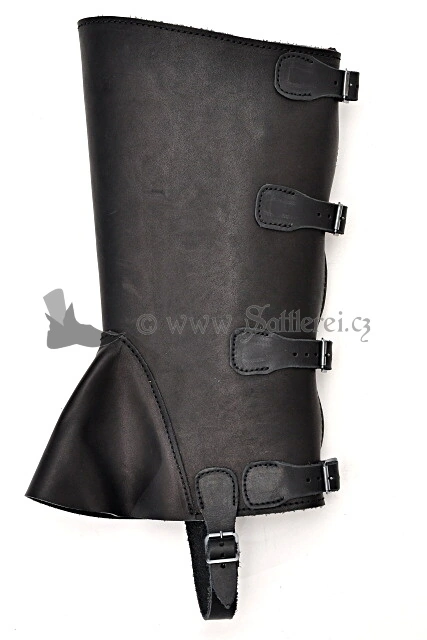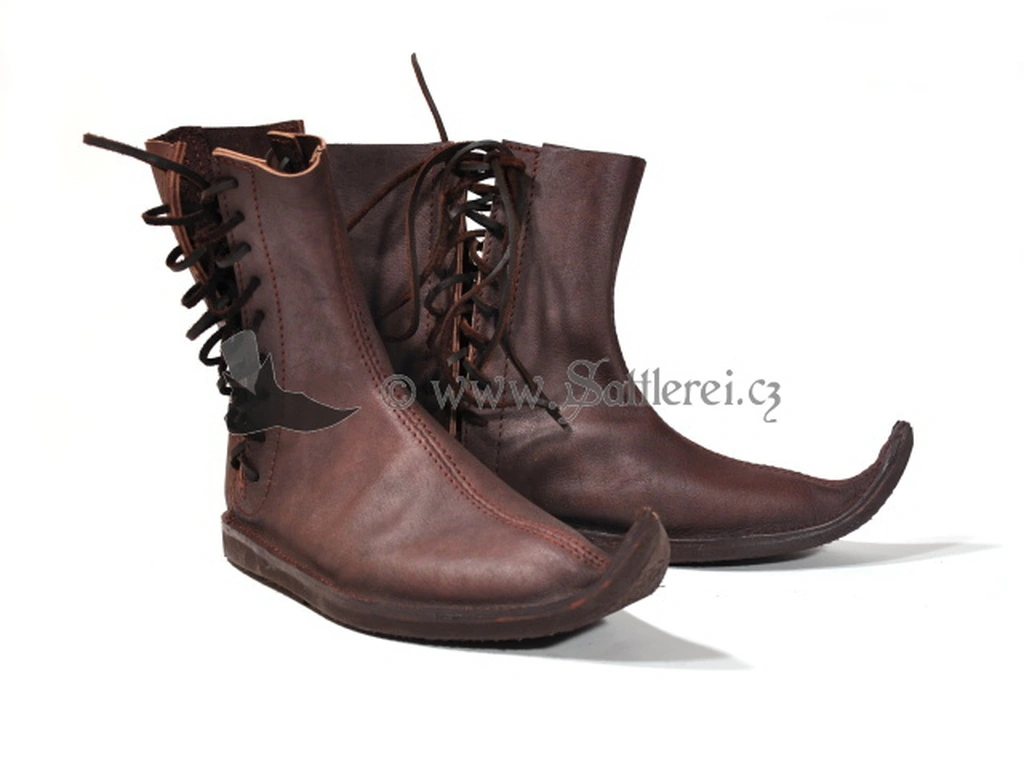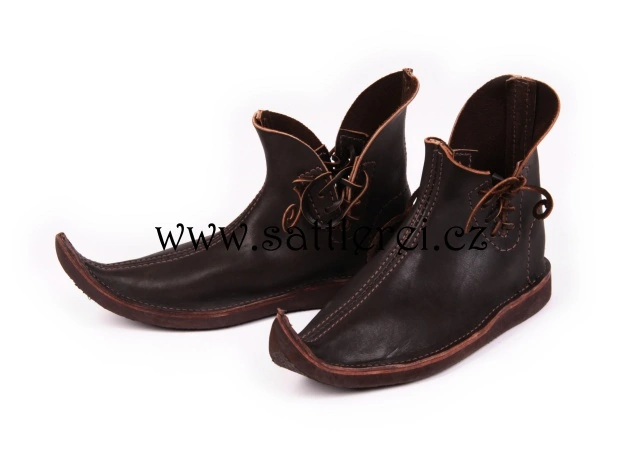
Living History Footwear
These boots and shoes are made to suite the Living History Enthusiast. They are closer to the original Medieval footwear than most others boots on the market.
Custom Sized Medieval Footwear In the 14th and 15th centuries, shoes again became more pointed in the toe, but rarely did the styles grow to any ridiculous lengths (although, at times this did happen). The designs in this manual are for shorter toes, although these may be modified as the cordwainer sees fit. By the 14th century, there was a greater standardization of shoe design, and an increase in the use of smaller pieces in more complex patterns. By the late 14th century, Pattens became common, as were more open-work decorative designs. Pattens, sometimes referred to as Clogs, were a form of overshoe or protective raised sole, first made from wood, then sometimes later of leather. In the 15th Century, shoe construction techniques changed with the evolution of "turn-welt" construction, from the rand techniques, which allowed heavier soles to be attached to the shoe.
